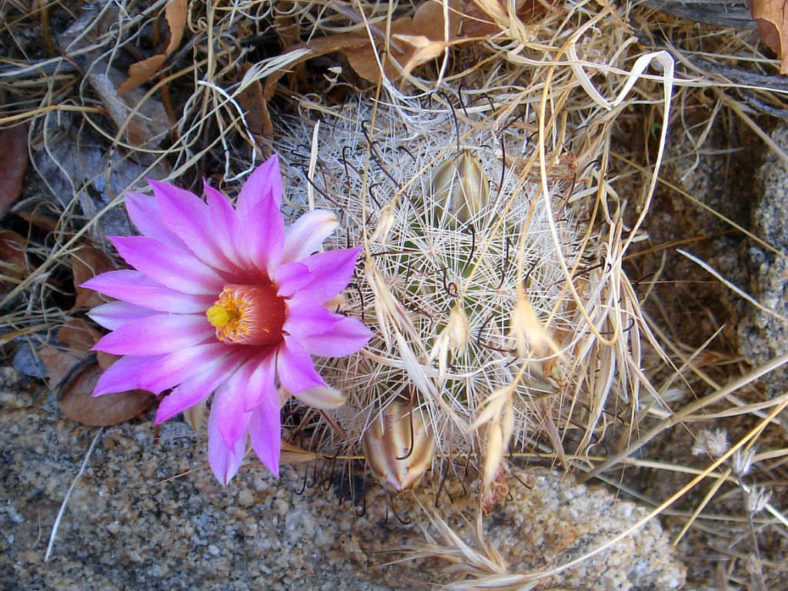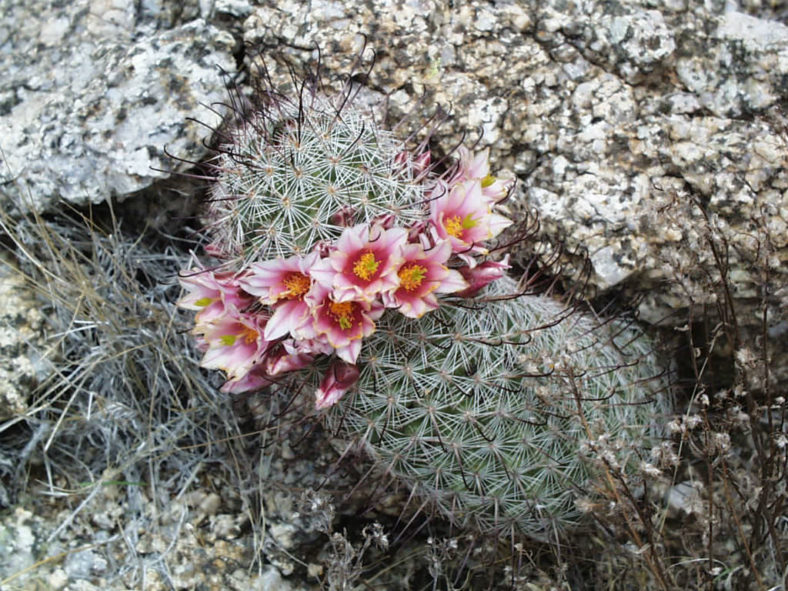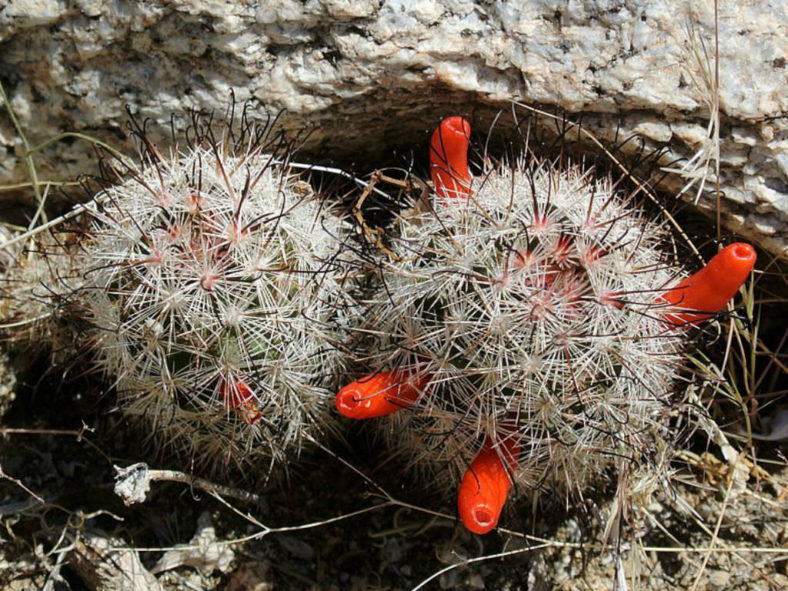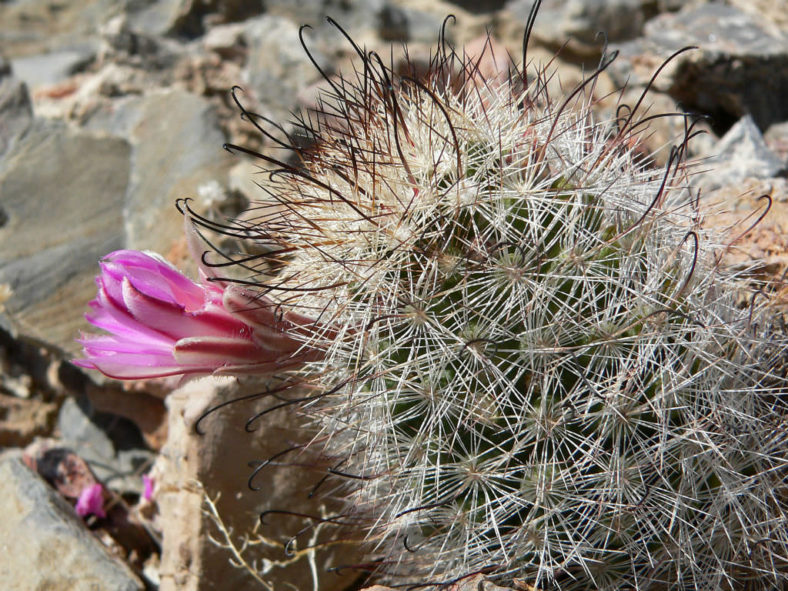Scientific Name
Mammillaria tetrancistra Engelm.
Common Name(s)
Common Fishhook Cactus
Synonym(s)
Bartschella tetrancistra, Cactus tetrancistrus, Cochemiea tetrancistra, Neomammillaria tetrancistra, Phellosperma tetrancistra
Scientific Classification
Family: Cactaceae
Subfamily: Cactoideae
Tribe: Cacteae
Subtribe: Cactinae
Genus: Mammillaria
Origin
Mammillaria tetrancistra is native to the Mojave and Sonoran Deserts of northern Mexico and the southwestern United States.
Description
Mammillaria tetrancistra is a fishhook cactus with a cylindrical, usually solitary stem that can grow up to 10 inches (25 cm) tall and 3 inches (7.5 cm) in diameter. Each areole bears 3 or 4 dark, hooked central spines and many straight, white radial spines.
The flowers are pink to lavender and can reach a diameter of 1.6 inches (4 cm). The fruits are fleshy, shiny red, and contain many black seeds.

Hardiness
USDA hardiness zone 9b to 11b: from 25 °F (−3.9 °C) to 50 °F (+10 °C).
How to Grow and Care
To encourage better flowering, allow the plants to enjoy a cooling period in the winter and suspend watering. Unlike many other cacti, which use their ribs as storage devices, the Mammillaria feature raised tubercles, from which spines emerge. When you water, the tubercles will expand to allow for increased water storage. The flowers emerge from the axils of these tubercles on the previous year's growth, which accounts for their interesting halo effect. The cactus mustn't be exposed to prolonged dampness and standing water. Never let your cactus sit in a dish of water. Lastly, fertilize during the growing season for the best results.
Repot as needed, preferably during the warm season. To repot a cactus, ensure the soil is dry before repotting, then gently remove the pot. Knock away the old soil from the roots, removing any rotted or dead roots.
See more at How to Grow and Care for Mammillaria.
Links
- Back to genus Mammillaria
- Succupedia: Browse succulents by Scientific Name, Common Name, Genus, Family, USDA Hardiness Zone, Origin, or cacti by Genus
Photo Gallery
Click on a photo to see a larger version.


